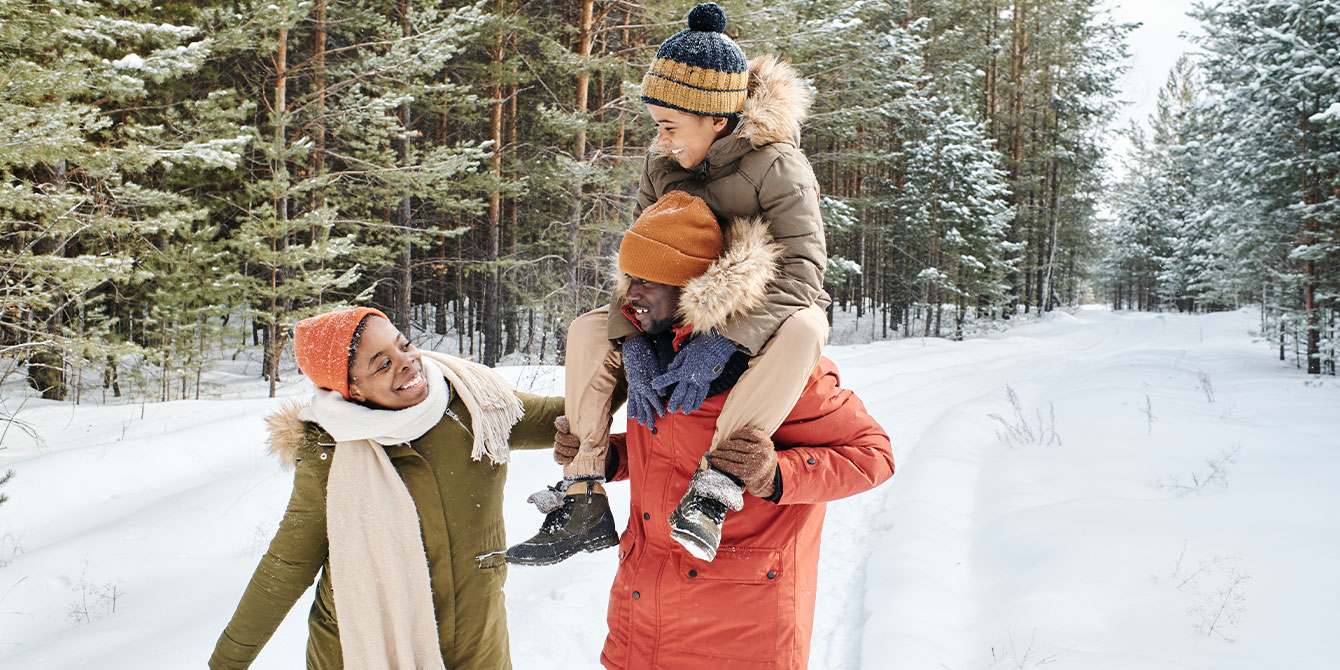7 eco-friendly winter activities for kids

This story was written by Mia Barnes and originally appeared on Brightly.
Winter is a slow time. Some of the planet’s creatures hibernate, while others fly south for the season. However, most humans don’t enjoy either luxury, weathering the cold with layers of warm clothing and creative ways to stay busy during the brief days and long nights. This goes double for children, making perfecting a menu of winter activities for kids a must.
What can you do to encourage more Earth-consciousness in your children while keeping them healthy and active through the cold season? Simple, joyful cold weather activities help to keep brains sharp (and hands busy) when school is not in session, upping mindfulness and science skills along with artistry.
In a practical sense, winter activities make naptime a breeze—who hasn’t discovered their little one snoring away in the car at least once on the way home from the playground? And, when chosen correctly, this brand of playtime can increase levels of eco-consciousness, too.
Here, seven winter activities to try the next time you hear the dreaded “I’m bored.”
7 winter activities for kids
1. Winter mindfulness walk
Teaching your children to recognize their feelings and how they impact their behavior is crucial for emotional regulation. So why not take a mindfulness walk?
Winter mindfulness walks allow your children to experience the sensation of cold and wind. They can also teach them about their world, and how to pay closer attention to it. Do things smell differently when temperatures dip? Why is that? Older children might follow up by researching the answer on their computers when they return indoors.
2. Snow experiments
What melts snow faster: boiling or lukewarm water? Is there a difference? This simple experiment can keep your kid’s science skills on point over a long holiday break. And that’s not the only experiment they can do with the frozen matter! How much water is in a snowball? Does snow sink or float? Let your kids discover the answers.
3. Pine cone birdfeeders
Do you remember the joy of pine cone birdfeeders as a kid? It’s a snap to make this simple craft. All you need is peanut butter (or any nut butter), seeds, yarn, and pine cones.
Affix the string to the pine cone, wrapping it securely around several “leaves” to prevent breakage. Next, coat the cone with nut butter and roll it in seeds. Hang from a tree limb you can see from your window and gather the whole family to watch the avian action.
4. Identify animal footprints
Snow makes finding animal prints a lot easier. Head to your local national park or nature preserve and keep your eyes peeled for the imprints of paws and talons, photographing what you discover. When you arrive home, see if your children can identify the prints using online resources or books.
5. Blow frozen bubbles
What if you could preserve your child’s favorite bubbles as a sculpture? You can—if temporarily—with the cold’s assistance.
Add a splash of bubble solution to a bowl and stick it outside to let it cool. When the temperatures dip below freezing, venture out and blow a bubble using the chilly solution, gently enough so that it doesn’t release. Sit patiently and wait (make it a mindfulness activity) until it solidifies into a magical orb.
6. Plant a winter garden
introduces your children to the cycle of life and allows your family to grow fruits, veggies, and herbs at home, reducing emissions from store trips and food production, packaging, and transport.
In terms of the life cycle lesson, winter is the ideal time for this undertaking. Though spring is prime time for planting, the winter months are ideal for sprouting seedlings indoors (six to eight weeks ahead of planting) and even putting salad greens, radishes, and carrots in the ground.
7. Frozen stained glass windows
Bubble solution isn’t the only thing that freezes. Your children can create beautiful, if temporary, stained glass windows or decorative (and even edible) ice cubes using natural materials.
For the faux glass, have your little ones gather various leaves, seeds, and blooms to create a collage. Pour water into a shallow dish and artistically arrange their gatherings as a picture, letting low temperatures do the rest. As for ice cubes? Help your kids identify edible items like rosemary and sprinkle them into a tray. Enjoy in water for a refreshing treat.
This story was written by Mia Barnes and originally appeared on Brightly.





